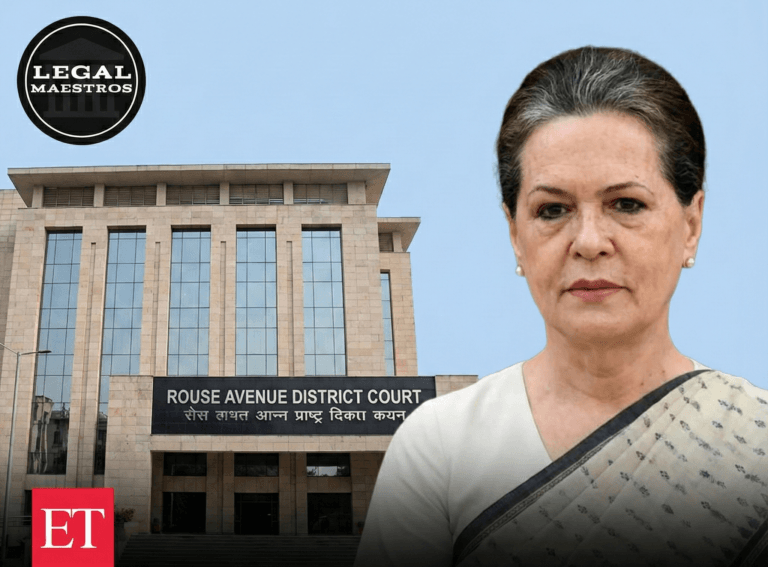
Joinder of Charges: Understanding Sections 241 and 242 of the Bharatiya Nagarik Suraksha Sanhita, 2023
Joinder of Charges: An Analysis of Sections 241 and 242 of the Bharatiya Nagarik Suraksha Sanhita, 2023
The theory of joinder of charges in criminal trials under Sections 241 and 242 of the Bharatiya Nagarik Suraksha Sanhita (BNSS) 2023 deals with how various charges against a suspect person ought to be treated. These provisions deal with how justice may be rendered equitably without causing hardship while at the same time accommodating related offences in the convenience of managing the case to achieve expeditious trials without infringing the rights of the accused.
Section 241: Independent Charges for Separate Offences
For any queries or to publish an article or post or advertisement on our platform, do call at +91 6377460764 or email us at contact@legalmaestros.com.
Section 241 says that for every different offence with which a person is charged, there should be a distinct charge, and charges should in the main be tried separately. In this way, every offence can be dealt with individually, permitting both the defence and prosecution to concentrate on specific facts and proof of each charge. The fundamental idea is not to cause any confusion or undue prejudice that can result from piling up separate charges in a single trial.
Example of Separate Charges for Different Offences: Let us assume that an individual, A, is charged with theft on one count and grievous hurt (serious injury) on another. Under Section 241, these two charges must be separately instituted and heard. A case of theft entails different evidence, witnesses, and legal aspects than a case of grievous hurt. Having them separate guarantees that each occurrence is judged impartially and without prejudice.
Exception of Consolidation of Trials: Section 241 does provide for an exception if the accused individual, by a written petition, wishes to have several charges consolidated for joint trial and the magistrate finds the consolidation of the charges not prejudicial (injurious) to the accused. Here, the discretion is with the magistrate to decide in view of the specific facts of the case. The defendant could ask for a joint trial in order to streamline the proceedings, save court time, or even cut down on legal expenses. If the magistrate finds that the case would not be confused by a joint trial or harm the defense, the charges may be tried jointly.
Illustration: When A is charged with committing several offences of petty theft at various times, A may ask to be tried on a single occasion for all charges of theft, provided the magistrate finds it would not prejudice A’s defence
For More Updates & Regular Notes Join Our Whats App Group (https://chat.whatsapp.com/DkucckgAEJbCtXwXr2yIt0) and Telegram Group ( https://t.me/legalmaestroeducators ).
Section 242: Trial for Multiple Offences of the Same Kind
Section 242 provides for a provision to deal with cases where an individual is charged with having committed more than one offence of the same nature within a year. It provides for several offences of the same nature, not exceeding five, to be charged and tried in a single trial. This provision aims at streamlining court proceedings and minimizing the necessity for successive trials on the same matter, thereby saving resources and time.
Definition of Offences of the “Same Kind”: To be regarded as being of the “same kind,” the offences must be punishable under the same section of the Bharatiya Nyaya Sanhita (BNS) or the same local or special law. The offences should also have the same punishment. Section 242 further explains that attempts to commit a particular offence are deemed to be of the “same kind” as the offence itself if the attempt is punishable.
Illustration of Offences of the Same Kind: If A has committed several thefts from various individuals in one year. As thefts are covered under the same section of the BNS and are punished equally, A can be prosecuted for a maximum of five such offences in one trial. This saves A from facing five different trials for each theft, and it also lessens the workload on the court as well as the accused.
Special Provisions regarding Offences under Certain Sections: Section 242 also describes a special case in which an offence under Sub-section (2) of Section 303 is treated as one of the “same kind” as an offence under Section 305. The rule is aimed at introducing more consistency and foresight into how these offences are to be tried, although these might be accompanied by slightly variant circumstances or punishment.
Example of the Application of Special Provisions: When A is charged with multiple attempts and actual offenses of a particular offence committed in the same year, the BNSS considers attempts and completed offenses of the same kind as “same kind.” The court is then able to consolidate and try completed offenses and attempted offenses together if they constitute “same kind” and fall under the permissive number of five or less charges.
Relationship Between Sections 241 and 242
Sections 241 and 242 complement each other in outlining the manner in which charges ought to be brought and prosecuted, balancing fair treatment and judicial effectiveness. Section 241 is highlighting individual trials for separate, discrete charges in order to avoid ambiguity, while Section 242 facilitates the charging of like offences against a particular series of time if there are many examples of a single offence type. Both sections are actually seeking a more just, simpler trial process based upon the nature of the charges and the period involved.
Practical Consequences of Joinder of Charges
Fairness in Trials: Through providing for separate trials for different offences and collective trials for offences of a similar nature, Sections 241 and 242 ensure the right of the accused to a fair trial. They avoid unrelated charges obscuring one another and ensure that attention is focused on individual facts and evidence for each offence.
Efficiency in Court Proceedings: Section 242’s provision to try multiple similar offences together significantly saves judicial time and resources. For both the accused and the legal system, this reduces repetitive procedures and helps to conclude cases faster.
Discretion of Magistrates: The exception clause in Section 241 vests certain discretion in the magistrate, enabling him to exercise judgment based on the specific context of each case. This balances flexibility within the law, while taking into consideration the rights of the accused and the efficiency of the judicial process.
Conclusion: Balancing Justice and Judicial Efficiency
Sections 241 and 242 of the Bharatiya Nagarik Suraksha Sanhita, 2023, regulate the management of charges in criminal trials to ensure fairness and expediency. By requiring distinct trials for different offences while permitting combined trials for offences of a similar nature within a year, these provisions are flexible without infringing on the right to a fair trial. They offer a framework that accommodates judicial expediency and clarity, facilitating both the prosecution and the accused to present their cases comprehensively and fairly.







